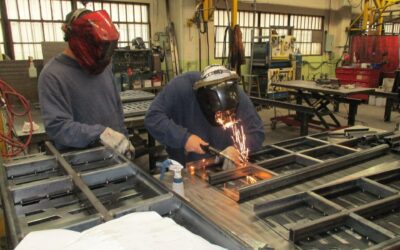Imagine this common scenario: Your company is doing well producing and selling a product at a 20 percent margin. You’re calculating your costs but aren’t in fact capturing all your actual costs. Your actual costs would show you’re closer to a 15 percent profit margin.
No one wants to be in a situation of making less money than anticipated. As a chief financial officer, ask yourself these questions:
- Do you truly know what it costs to produce 75 percent of your revenue?
- Are you focused on processes and efficiencies at your company?
A cost accounting analysis—which relates to inventory, holding cost, and warehouse space, among other items—can help you answer these questions by offering a better understanding of the true cost of your products. By extension, an accurate overview of your business could help guide you toward improved profit margins and overall efficiency.
Components
While the process can be equally straightforward and complicated, cost accounting at its core is a method of determining the actual cost of producing or procuring a product. In order to do that, it’s essential to identify each of a product’s components and the actual cost to the company. Those components might include direct materials, direct labor, and overhead costs.
Direct materials
These pertain to material costs that could be directly allocated to the production of the product. This can be straightforward if you buy your materials directly from a third-party vendor and include all costs and charges for:
- Purchasing materials (these must be directly incurred)
- Taxes
- Transport
- Handling net of discounts received
Direct labor
This relates to the labor cost of people directly working on the production line and can be fairly straightforward to determine—with time cards, for example.
Overhead costs
These can be harder to determine and allocate. Allocation of fixed manufacturing overhead can be particularly complicated because of the different drivers for each type of overhead cost and the fluctuation in the level of production between periods. Overhead costs include all inventoried costs that aren’t classified under direct materials and direct labor. Examples include:
- Factory supplies
- Supervision
- Rent
- Utilities
- Machinery costs
Six Areas to Improve
Beyond determining the actual cost of a product or its components, companies often run up against six common issues that cost accounting can help them overcome:
Consistency
In addition to not knowing what the true cost of overhead is, companies aren’t consistent in how they capture or apply it. For example, production might order a lot of inventory so it’s ready when production ramps up but then doesn’t consider the cost of holding that inventory.
Information Technology (IT) Systems
IT systems are often limited when it comes to a robust cost accounting process. It isn’t uncommon for a company to struggle to track or apply overhead to its products because an IT system either isn’t tracking the cost information or simply can’t process it.
Variability of Production Volume
A lot of companies struggle to find the right production volume base to determine the fixed overhead cost per unit. What’s the appropriate volume to use on an ongoing basis if you produce 1,000 units one month and 2,000 units another month? The challenge is finding the right amounts to use.
US generally accepted accounting principles (GAAP) tells you it’s the normalized production volume. This means if your facility is set up to produce 100,000 units—and that’s a reasonable expectation for your production—then the standard says to use 100,000 as your normal production volume. If you have a year during which you produced 50,000 units, GAAP says to still use 100,000 units when allocating overhead.
You’ll end up expensing a portion of your fixed overhead costs in this scenario, which many companies don’t like because it doesn’t make sense for them to expense production overhead costs when there are goods on hand. Companies typically would rather capitalize all the overhead costs into inventory and expense them when they sell the products. There’s a range of acceptable levels of production that can be used—this is a gray area.
Communication and Understanding
The numbers at face value don’t always tell the complete story. Communication between operations and finance is key to filling in the blanks. While the production team may know, the finance team might not be aware, for example, that a company is operating at half capacity for a quarter. This means the actual costs being allocated don’t match up against the actual overhead. If there are fluctuations with a company’s margin, finance will have a true understanding of the source of that fluctuation through effective communication with operations.
Changing Prices
Cost can complicate how you run your business. Here’s a simplified example: A company experienced some decreases in product costs in the past year due to volatility in oil and gas prices. As oil went down, its raw material costs went down. The company, meanwhile, didn’t update those costs and continued to use standard costs for materials. If the finance department doesn’t know the product costs decreased, this may keep the company from being competitive with other companies that are passing these decreasing product costs on to their customers.
Disconnect
It’s difficult to run an efficient business with inaccurate numbers, not to mention the barrier to success this creates. If companies can bridge this disconnect, the knowledge gleaned from understanding their costs alone helps to alleviate risk and create a more efficient organization.
We’re Here to Help
A lot of companies are pretty good at analyzing information when there’s a problem. But analyzing your company’s processes, products, and the actual business when it seems to be going well is an opportunity that’s often overlooked. It’s the perfect time to make investments in processes and systems that can help your business become more efficient and profitable.
Through a cost accounting analysis, we can help you identify your true costs, set up or improve processes as needed, and customize reporting that you can use to make informed decisions. If you’d like to learn more about cost accounting and how your business might benefit from this process, contact your Moss Adams professional.



